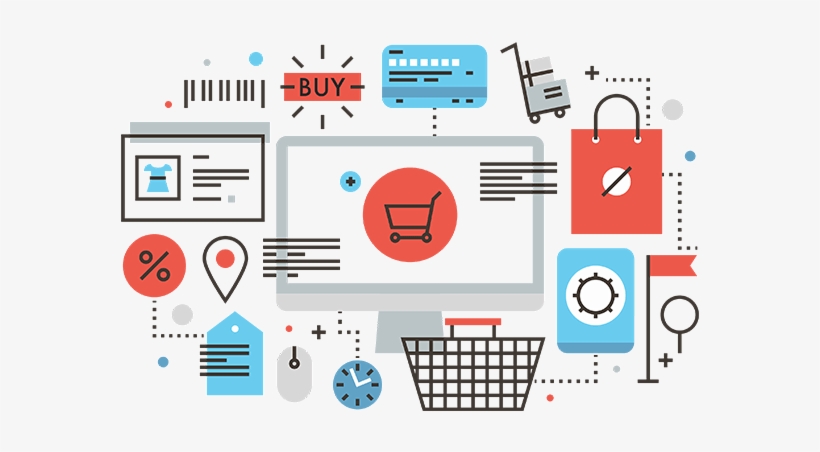Ecommerce has been booming for several years, and the COVID-19 pandemic has only accelerated its growth. As a result, online businesses are continuously evolving and adapting to meet the ever-changing needs of consumers. In this article, we’ll discuss the top ecommerce website development trends for 2023.
Mobile-first approach
Mobile commerce has been growing rapidly in recent years and is expected to account for 72.9% of all ecommerce sales by 2023. In light of this, ecommerce websites must prioritize mobile optimization. A mobile-first approach means designing the website for mobile devices first and then scaling it up for desktop. This approach helps ensure that the website is user-friendly and accessible to a larger audience.
Progressive Web Apps (PWA)
Progressive Web Apps are web applications that look and feel like native mobile apps. They can be accessed through a browser, but they offer the same experience as a mobile app. PWAs load quickly, are responsive, and work offline, making them an excellent option for ecommerce websites. PWAs are also cost-effective compared to developing a native mobile app for multiple platforms.
Voice commerce
The popularity of smart speakers and voice assistants has grown significantly in recent years, with 8.2 billion voice assistants expected to be in use by 2023. This presents a massive opportunity for ecommerce websites to tap into the voice commerce market. Voice commerce allows users to shop and make purchases using voice commands. Ecommerce websites that incorporate voice search capabilities will be able to provide a more accessible shopping experience to users.
Artificial Intelligence (AI) and Machine Learning (ML)
AI and ML can be used to enhance the shopping experience on ecommerce websites. For instance, chatbots can be used to provide customer support 24/7, helping to improve customer satisfaction. Additionally, AI and ML can be used for personalized product recommendations, which can increase the likelihood of a purchase. Ecommerce websites can also use AI to optimize pricing, inventory management, and even fraud detection.
Augmented Reality (AR)
Augmented Reality technology allows customers to visualize products in real-world environments. AR is particularly beneficial for ecommerce websites that sell furniture, clothing, or accessories. Customers can use their phone’s camera to see how a piece of furniture will look in their living room, or they can see how a piece of clothing will fit them before making a purchase. AR technology provides a more immersive shopping experience and can help reduce the likelihood of returns.
Social commerce
Social media platforms have become a significant source of traffic for ecommerce websites. Social commerce allows users to browse and purchase products directly from social media platforms. For example, Facebook has its own marketplace, while Instagram allows users to tag products in their posts, making it easier for users to shop. Integrating social commerce into ecommerce websites can help businesses reach a wider audience and increase sales.
Also check: E-Commerce Website Development Cost In India
Subscription-based models
Subscription-based models have been growing in popularity in recent years. Subscription-based ecommerce websites offer customers the convenience of having products delivered to their doorstep regularly. Subscription-based models are particularly beneficial for businesses that sell consumable products like food, skincare, or pet supplies. Ecommerce websites can offer customers a variety of subscription options, including weekly, monthly, or quarterly deliveries.
Personalization
Personalization has become increasingly important in ecommerce. Customers want a shopping experience that is tailored to their needs and preferences. Ecommerce websites can use customer data to offer personalized product recommendations, promotions, and even personalized email marketing campaigns. Personalization can help increase customer loyalty and improve customer retention.
Blockchain technology
Blockchain technology has the potential to transform ecommerce by providing a more secure and transparent payment system. Blockchain technology can help prevent fraud and protect sensitive customer data. Additionally, blockchain technology can help ecommerce websites improve supply chain transparency by providing real-time tracking and tracing of products. This can help increase customer trust and reduce the likelihood of counterfeit products entering the supply chain.
Payment flexibility
Providing customers with multiple payment options is becoming increasingly important in ecommerce. Customers want the flexibility to choose the payment method that works best for them, whether it’s through credit card, debit card, PayPal, or other digital wallets. Ecommerce websites that offer multiple payment options are more likely to convert visitors into customers.
Green ecommerce
Sustainability and environmental awareness are becoming increasingly important to consumers. Ecommerce websites can make a difference by adopting sustainable practices such as reducing packaging waste, using eco-friendly materials, and offering carbon-neutral shipping options. Ecommerce websites that prioritize sustainability can appeal to environmentally conscious consumers and differentiate themselves from competitors.
User-generated content
User-generated content (UGC) refers to any content created by users, such as product reviews, ratings, and social media posts. UGC can be a powerful tool for ecommerce websites as it helps build trust and credibility with potential customers. Ecommerce websites can encourage customers to leave product reviews and share their experiences on social media. UGC can also be used to create engaging marketing campaigns and increase brand awareness.
In conclusion, ecommerce website development trends are constantly evolving. Businesses that want to stay ahead of the competition need to be aware of these trends and adopt new technologies and practices to improve their customers’ shopping experience. By prioritizing mobile optimization, adopting PWAs, integrating voice commerce, using AI and ML, implementing AR, integrating social commerce, offering subscription-based models, personalizing the shopping experience, adopting blockchain technology, providing payment flexibility, prioritizing sustainability, and leveraging user-generated content, ecommerce websites can provide a better shopping experience and increase sales.
Hope this Article is informative for our readers! hire best ecommerce developers in India from eglobalindia for effective ecommerce solutions.



Recent Comments